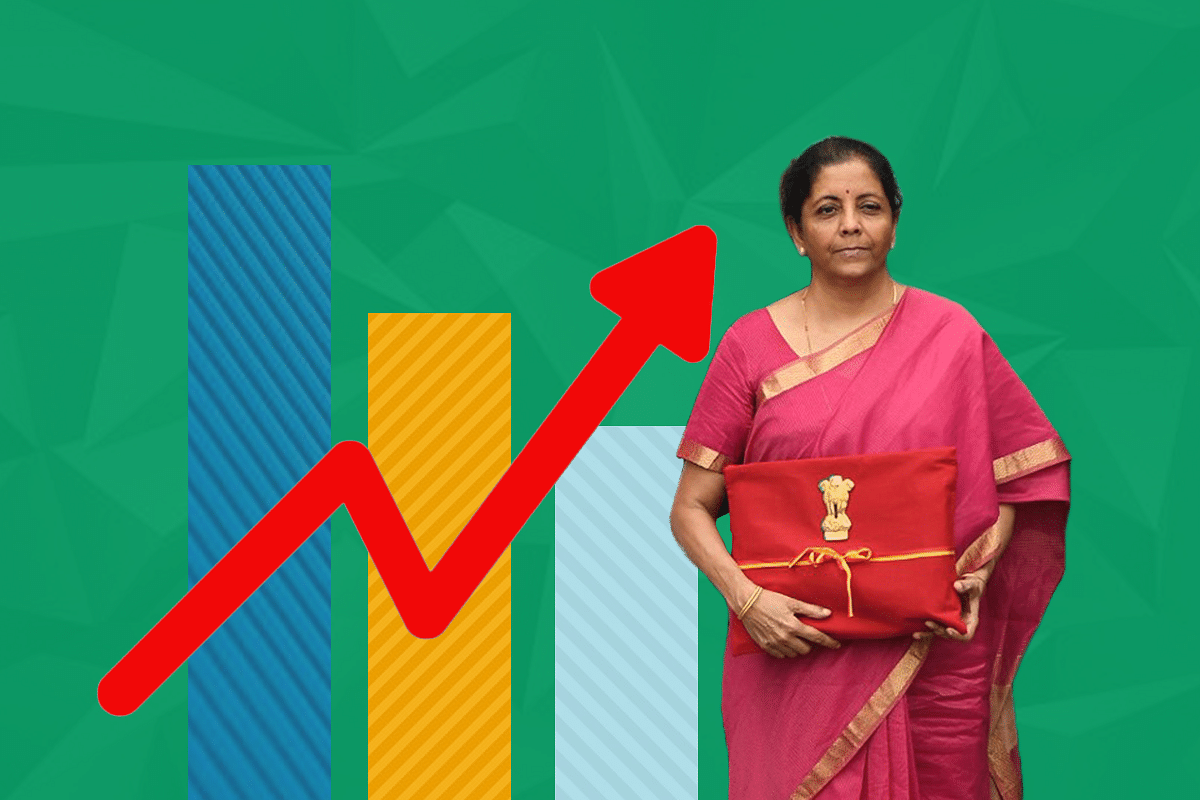Economy
GDP Over-Estimation Debate: How Economic Survey Data Can Silence Critics
- The economic survey provides a rigorous review of different models and uses extensive statistical exercises to explain why India’s GDP is indeed a reliable estimate of economic activity.
- Next time someone talks about GDP statistics being mis-estimated, we can ask them to show us facts since the economic survey has provided data to show how it is not.

Finance Minister Nirmala Sitharaman.
This year’s economic survey has a lot of important aspects that are worth discussing in detail, and one of those aspects is to do with the chapter on the Indian economy. Many experts, academics and policy wonks have raised suspicion on India’s gross domestic product (GDP) numbers – including India’s former chief economic adviser, Dr Arvind Subramanian.
The key question is whether India’s growth is overstated or not as it has implications for policy. The economic survey builds on the methodology presented by Dr Surjit Bhalla (2019) where he performed a comprehensive analysis using the model presented by Subramanian on a wide group of countries.
His results revealed the flaw in such an analysis as he found a significant group of countries overestimating their GDP growth while others were underestimating their growth.
The economic survey extends this analysis and explains the UNSA methodology adopted for national accounts. The UNSA methodology is an international standard for estimating GDP growth and it ensures comparability of growth rates across countries.
The subtle point throughout the chapter is as follows, computation of GDP is an accounting exercise while running models is a statistical exercise. Both are fundamentally different, and we can’t replace an accounting exercise with an econometric/statistical one.
Moreover, the chapter uses the same statistical models and variables as used in the original Arvind Subramanian paper and it provides a comparison of the signs of correlation for different macroeconomic variables.
[Stats refresher: Correlation is the degree of linear relationship between two variables, it is measured between -1 and 1 with -1 meaning a negative relationship, 0 being no relationship and 1 being a positive relationship. Correlation does not tell us whether variable X causes Y or variable Y causes X but only shows us that they will either move together or move in different directions.]
It is interesting to observe how the signs of correlation have changed over time for a bulk of these variables as shown in Table 7 in Chapter 10 of the economic survey.
This shows the problems associated with using a statistical procedure for estimation of the GDP as a bulk of such variables may depict different relations from time to time.
Besides, a bulk of economics is driven by ceteris paribus which means all other things kept constant.
However, in the real world, there are a bulk of factors that affect variables in different ways.
For instance, a period of slow world exports or negative exports for a country at a time when domestic growth is extremely robust would show a negative correlation between growth rate and exports.
However, that doesn’t imply that higher exports would result in lower growth or vice versa. These limitations are important while undertaking any econometric exercise to validate a result from an accounting exercise.
Fun fact: The models that indicate India’s GDP is overstated based on the new series found that 51 countries out of 95 countries in the sample had mis-estimated their GDP growth over the same period.
It cannot be the case that countries such as India, UK, Germany, Singapore, South Africa and Belgium would have all simultaneously overstated GDP growth rates.
In a recent joint article with Dr Bhalla, we reconstructed the national accounts and found that the data is extremely consistent with other sources including the nightlights data and from what we know happened in the Indian economy between 2011 and now.
At the end of the day, one must concede that a bulk of the debate around GDP statistics has become too political and many have formed their opinion on this on the basis of their political beliefs.
However, that is where stats come in play as they ensure one can be dispassionately objective about such things. The economic survey in its chapter 10 does precisely the same. It provides a rigorous review of different models and uses extensive statistical exercises to explain why India’s GDP is indeed a reliable estimate of economic activity.
One hopes that this issue will get settled now and the next time someone talks about GDP statistics being mis-estimated, we can ask them to show us facts since the economic survey has provided data to show how it is not.
Introducing ElectionsHQ + 50 Ground Reports Project
The 2024 elections might seem easy to guess, but there are some important questions that shouldn't be missed.
Do freebies still sway voters? Do people prioritise infrastructure when voting? How will Punjab vote?
The answers to these questions provide great insights into where we, as a country, are headed in the years to come.
Swarajya is starting a project with an aim to do 50 solid ground stories and a smart commentary service on WhatsApp, a one-of-a-kind. We'd love your support during this election season.
Click below to contribute.
Latest